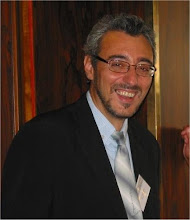
Over 20 different types of incandescent lamps were invented prior to the first commercially practical incandescent lamp created by Thomas Edison in 1879. A lamp, superior to the others because of a combination of three factors:
- an effective incandescent material,
- a higher vacuum than others were able to achieve
- the fact that Edison invented an entire, integrated system of electric lighting, where the lamp was a small component in an entire system of electric lighting.
Already in 1802, Humphry Davy created the first incandescent light by passing the current through a thin strip of platinum. It was not bright enough and in 1809, Davy also created the first arc lamp by making a small but blinding electrical connection between two carbon charcoal rods connected to a 2000-cell battery. Over the first three-quarters of the 19th century many experimenters worked with various combinations of platinum or iridium wires, carbon rods, and evacuated or semi-evacuated enclosures. Many of these devices were demonstrated and patented.
In 1840, British scientist Warren de la Rue enclosed a coiled platinum filament in a vacuum tube and passed an electric current through it. The design was based on the concept that the high melting point of platinum would allow it to operate at high temperatures and that the evacuated chamber would contain fewer gas molecules to react with the platinum, improving its longevity. Although an efficient design, the cost of the platinum made it impractical for commercial use.
In 1841, Frederick de Moleyns of England was granted the first patent for an incandescent lamp, with a design using platinum wires contained within a vacuum bulb. In 1845, American John W. Starr acquired a patent for his incandescent light bulb involving the use of carbon filaments. He died shortly after obtaining the patent. Aside from the information contained in the patent itself, little else is known about him. In 1851, Jean Eugène Robert-Houdin publicly demonstrated incandescent light bulbs on his estate in Blois, France. His light bulbs are on permanent display in the museum of the Chateau of Blois.
In 1872 A. N. Lodygin invented an incandescent light bulb. In 1874 he obtained a patent for his invention. For a filament, Lodygin used a very thin carbon rod, placed under a bell-glass. In August 1873 he demonstrated prototypes of his electric filament lamp in the physics lecture hall of the Saint Petersburg Institute of Technology. In 1873–1874 he conducted experiments with electric lighting on ships, city streets, etc. In 1874, the Petersburg Academy of Sciences awarded him with a Lomonosov Prize for his invention of the filament lamp. That same year, Lodygin established “Electric Lighting Company, A.N. Lodygin and Co”. In 1899, Petersburg Institute of Electrical Engineering awarded Lodygin with the honorary title of electrical engineer.
In a suit filed by rivals seeking to get around Edison's lightbulb patent, German-American inventor Heinrich Göbel claimed he developed the first light bulb in 1854: a carbonized bamboo filament, in a vacuum bottle to prevent oxidation, and that in the following five years he developed what many call the first practical light bulb. Lewis Latimer demonstrated that the bulbs which Göbel had purportedly built in the 1850s, had actually been built much later, and found the glassblower who had constructed the fraudulent exhibits. In a patent interference suit in 1893, the judge ruled Göbel's claim "extremely improbable".
In 1850 the English physicist and chemist Joseph Wilson Swan began working with carbonized paper filaments in an evacuated glass bulb. By 1860 he was able to demonstrate a working device but the lack of a good vacuum and an adequate supply of electricity resulted in a short lifetime for the bulb and an inefficient source of light. By the mid-1870s better pumps became available, and Swan returned to his experiments.
With the help of Charles Stearn, an expert on vacuum pumps, in 1878 Swan developed a method of processing that avoided the early bulb blackening. This received a British Patent No 8 in 1880. On 18 December 1878 a lamp using a slender carbon rod was shown at a meeting of the Newcastle Chemical Society, and Swan gave a working demonstration at their meeting on 17 January 1879. It was also shown to 700 who attended a meeting of the Literary and Philosophical Society of Newcastle on 3 February 1879. These lamps used a carbon rod from an arc lamp rather than a slender filament. Thus they had low resistance and required very large conductors to supply the necessary current, so they were not commercially practical, although they did furnish a demonstration of the possibilities of incandescent lighting with relatively high vacuum, a carbon conductor, and platinum lead-in wires. Besides requiring too much current for a central station electric system to be practical, they had a very short lifetime. Swan turned his attention to producing a better carbon filament and the means of attaching its ends. He devised a method of treating cotton to produce 'parchmentised thread' and obtained British Patent 4933 in 1880. From this year he began installing light bulbs in homes and landmarks in England. His house was the first in the world to be lit by a lightbulb and so the first house in the world to be lit by Hydro Electric power. In the early 1880's he had started his company.








